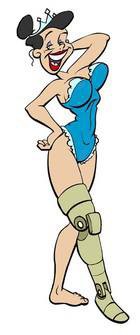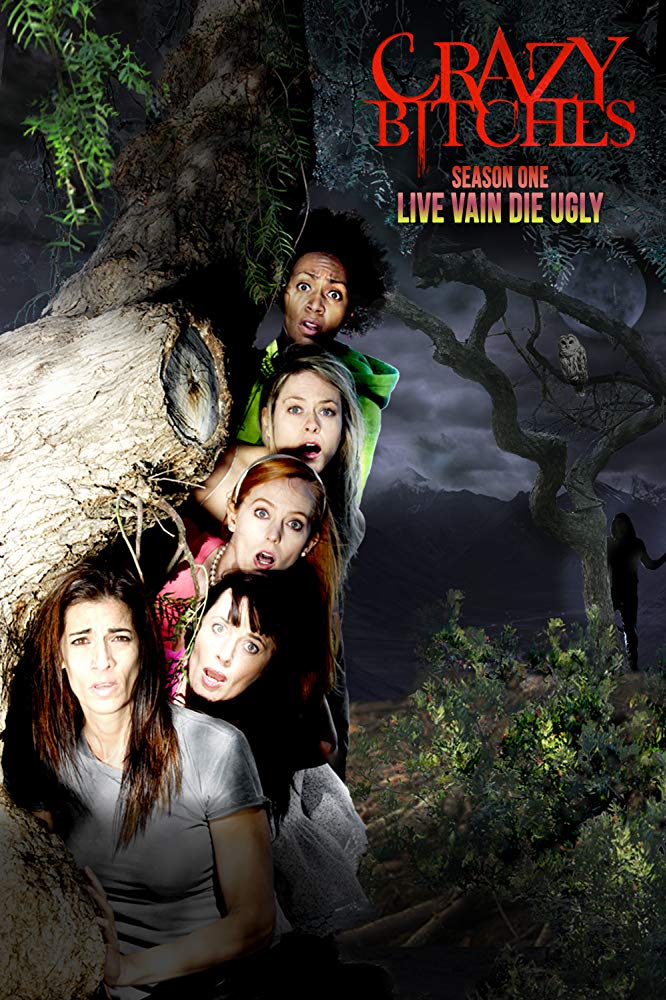
One of the coolest things in writing about film and entertainment is occasionally discovering a diamond in the rough. There are so many terrific, unsung projects out there that don't get the love they deserve, and I am always excited to share one of these gems when I find them. Recently I had the opportunity to sit down with writer/director Jane Clark to discuss her indie series CRAZY BITCHES.
Season one of the series revolves around a girls' weekend at a remote ranch that goes terribly wrong as each member of the group are picked off by a brutal killer. Season two of the web series joins an entirely new cast of characters as they contend with a similarly grisly fate at a weekend spa getaway. Both seasons offer up some laughs as well as cringes as the varied personalities in the story meet their demise in exceedingly creative and violent ways. Shot on a low budget, Clark manages to incorporate some surprising character arcs while maintaining an equally remarkable gore factor. It was great to get her take on the production, transitioning season one from a feature to a series format, and the ups and downs of shooting with make up and special effects with limited resources. Check out my interview with Jane Clark here!
Thanks so much for chatting with me today. I really enjoyed Crazy Bitches. It's crazy and bitchy.
Jane Clark:
(laughing) I'm glad.
Kellerman:
So, you filmed a feature first, correct? And then, it kind of evolved into a series and then, of course, with the season two. Can you talk a little bit about making that transition and what went into that?
Clark:
Yeah. Well, it was interesting because the feature was originally going to be a sequel. And then, I started looking at alternative ways to tell the story and alternative ways to get it made. And that led me to the idea of moving it into a series, which actually gave me an opportunity to say more about what I wanted to talk about. The feature that I had written for the sequel didn't fit. It didn't feel like it belonged right after the feature, so I actually pushed that ... That's actually season four. And then I just started mapping out where I was going to go over a five arc series. And it really was an interesting process because when you're working on a feature film, you're really limited to the amount of information you can get into a story and the amount of storytelling you can actually do in your hour and 30 or hour and 45 if you really want to push it. And so, looking at it as a series just really opened up the possibilities for me in terms of developing the storyline over a long period of time as opposed to a short period of time. And so, what I ended up doing was writing season two as almost a standalone season. And I used season two as my ... I want to say my map for the series rather than trying to start by editing the feature and then moving into a season two. I used the season two to make the template out of it because I felt like the feature was so ingrained in me. By starting with season two and writing season two specifically to be 10 to 12 minute episodes, I was able to start feeling a rhythm that was separate from the feature film. Once the edit was finished on season two, I understood what it was going to look like and how it was going to feel, and then I was able to go back with more freedom to do the work and incorporate those changes.
Kellerman:
So making the transition to a series- and going back to the feature and changing the format -gave you much more flexibility.
Clark:
Definitely. And in a lot of ways, it wasn't that difficult in terms of breaking up the feature itself because the feature... when I think about when I'm writing a script anyway, I'm always looking at that as an eight to ten page break. For every eight to ten pages, I'm always looking to see, are we on a journey and are we ... is something happening at that eight to ten page mark that helps to pull the audience along. And that's just sort of a rule of thumb I've always lived by. So, taking the feature and moving these pieces out into eight or ten minute segments wasn't really that hard because it was built that way anyway. The difficult stuff was really like how do you get in and how do you get out of the season or each episode. And I did also luckily have a bunch of footage that I had shot for season one. I did a whole opening that somebody had suggested that I do as a pickup day to try to explain the characters more so that when you're thrown into the feature, you'd kind of know who you were following. And in the feature, when I added it in, I looked at it and just thought, "This just wrecked the whole rhythm of everything because it just slows everything down, and you're not in it fast enough." So, I opted not to use it in the feature. But, for the series, it was actually a perfect way to introduce the characters and get into a serial story or a TV, more TV-esque storylines if that makes any sense at all.
Kellerman:
Yeah, for sure.
Clark:
So, I had that and that was great additive stuff. And there were a few things that I had left out of the feature for time. In one particular situation, there was a scene that I had to shoot in very tight quarters, and I couldn't look in certain directions because I was shooting day for night and if you look down the hallway, it was clearly light out. So, I had to make it feel like it was nighttime. I avoided certain certain angles, and then doing that, one of my shots was an extreme close-up, much closer than I would normally put into a feature, my style of feature, I think. But, for a web series, for the digital concept series that's going to only seen on, at the most, a TV but really somebody's computer or somebody's phone, you need those extreme close-ups.
Kellerman:
Sure.
Clark:
So, it actually allowed me to put some stuff in that I didn't feel fit with a feature, but I just put in because of the different format. And then, just in terms of shaping the feature, you're making it more adaptable to the medium. I've pushed in on a lot of things that had been a little wider and played around with the frame a little bit more. I went back and I took music from season two, added it into season one, and then had my composer write new material that helped me match the two seasons together. And then, I went actually back and took the color palette from season two and adjusted season one to more closely match the color palette so that there's more of a through line.
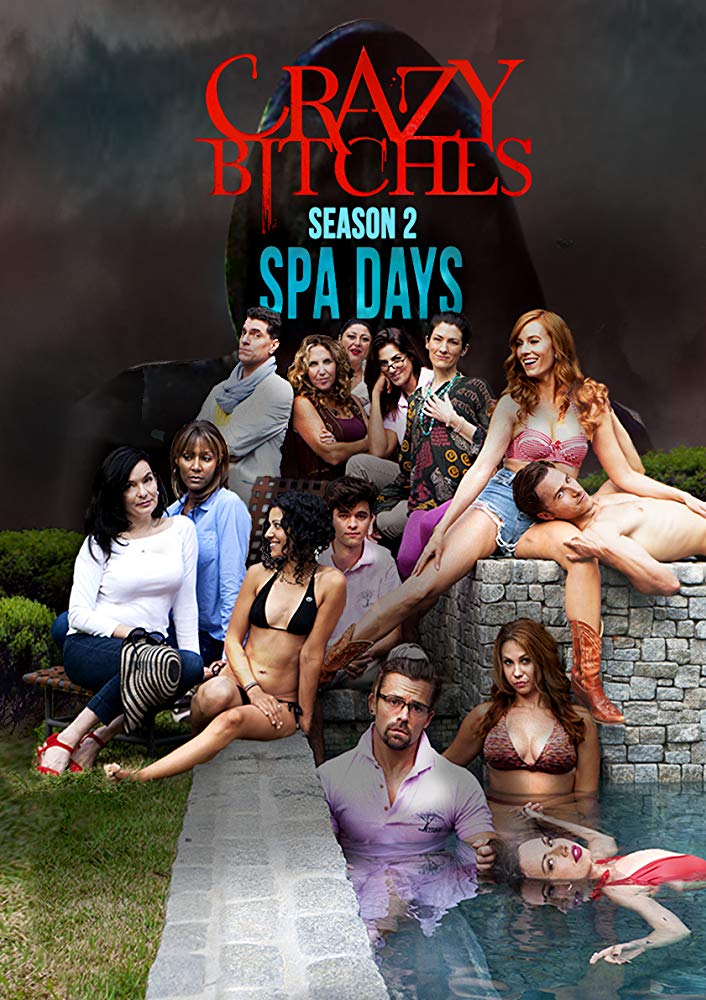
Kellerman:
Right. Did you always plan on basically using the same cast? I mean, not the same exact cast, but many of the same cast members?
Clark:
Yeah, I mean that's part of the fun ... First of all, I'm independent, so I can really do whatever I want, and I love working with people I know. And I also feel like, well, if I can't afford to get a name... which is normally what you do try to survive. So, when I'm looking at my budget, I can't do that. Then, why not go back to the actors I know are great, that are fun to work with. And it gives me an opportunity to offer them more opportunities, to expand their resume, and it's sort of like gathering a family. So, I don't know. I felt like I could break the rules, that I wanted to go back to my friends, and actually, a couple of the cast members were like, "Hey. Well, if you're bringing her back...what do I get to do?"
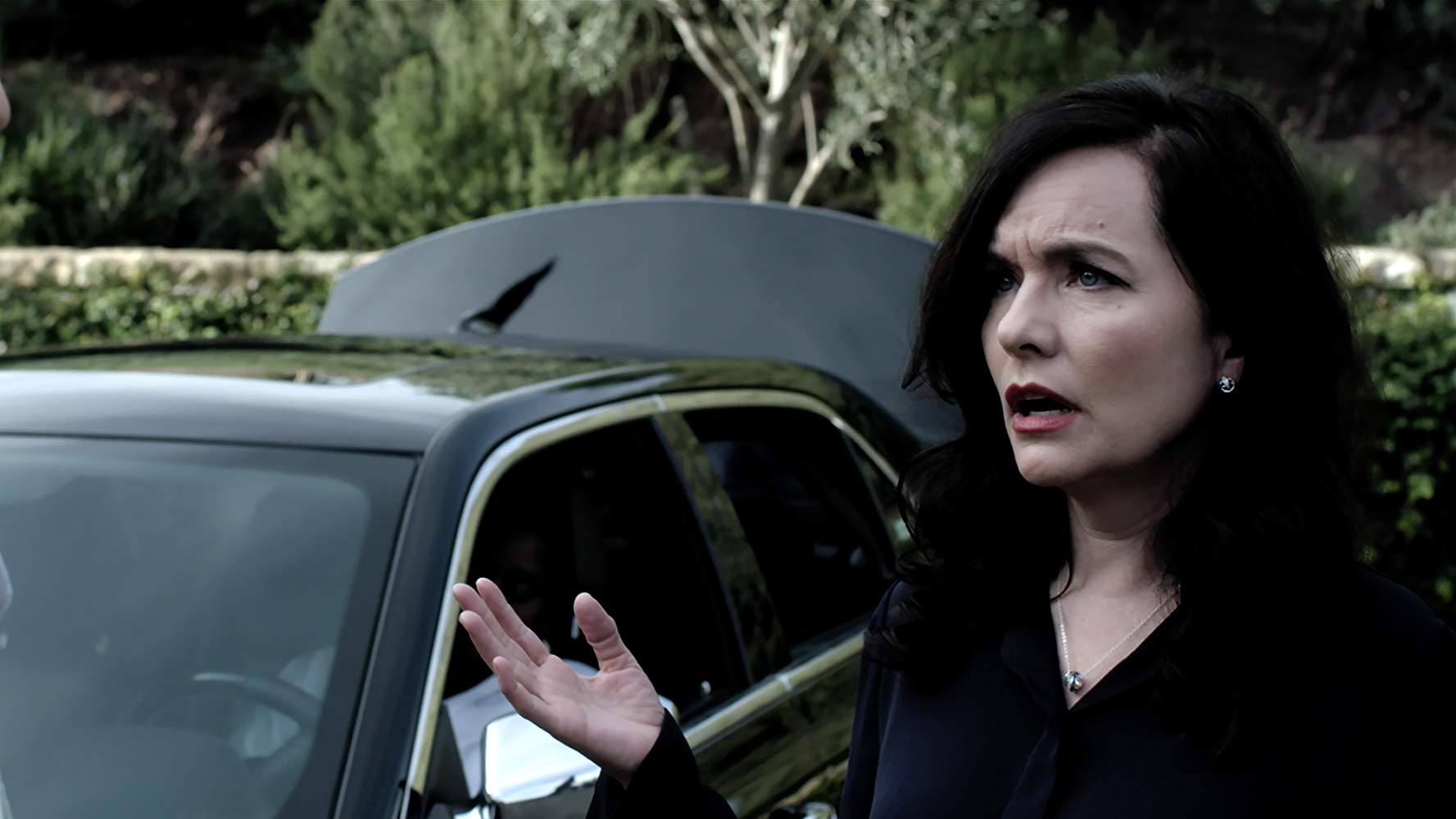
Kellerman:
Totally.
Clark:
So, it was just part of the joy of being an independent filmmaker. There's a lot of downsides, but one of them is that I get to do what I want to do.
Kellerman:
Yeah, you had a lot of flexibility. Can you talk a little bit about the wonderful inclusive aspect of the storylines, the LGBTQ aspects. I just love how it's not THE thing, but it's A thing. But it's not THE thing.
Clark:
It is a thing.
Kellerman:
Yeah.
Clark:
Well, I'm a straight girl, and I'm married to a guy. I don't feel like I could actually make a film or a TV show that was about the LGBTQ experience. I feel like I can only write what I know, but what I know is I have a lot of friends who are LGBTQ, and originally ... I had a little bit of history of working in the LGBTQ film community anyway, which was my past work because some of my past work is queer in character, but not in content. And I always look at it as I am not making queer content. I'm making content with queer characters.
Kellerman:
Right.
Clark:
Right. So, for me, it is kind of like, I look around my world, and I go, "Who is in my world?" And then, Crazy Bitches becomes a reflection of my world, which is filled with all kinds of people. And I feel also like it doesn't need to be part of the story line where I say, "Okay, you're gay, and this is what gay people do." It's more like you're a person, and you're struggling with insecurities, and you meet somebody who wants you to be better than those insecurities, and you fall in love. And so, it's just people engaging in life. Whether they're queer or not is not any part of the storyline. It just happens to be that they are, and that's my world.
Kellerman:
Yeah. I love that. Because it's not shoved down your throat, but it's like, "Oh yeah. That's actually how real life is." But, it's just not represented enough on screens I feel like.
Clark:
Well, think everybody's trying to make ... I think, right now, particularly with the LGBTQ community where there's so much at risk in terms of their rights and their safety.
Kellerman:
Absolutely.
Clark:
And so, I think that for the community, you find that they're making LGBTQ-centric stories because, of course, they're going to make sure those stories are out there and that they are expressed in the world and enlightened by them.
Kellerman:
Right.
Clark:
So, I understand the importance of that for me because I can't really tell their story. But, I do think that there's a lot of value in taking away the differences and showing that we're all alike. We all want the same things out of life. We want success in our career. We want people to find us attractive. We want to fall in love. We want to have fun with our friends. There's really, even in the big scheme of things, no difference. And I feel like one of the values that I can bring as a straight filmmaker is that I can express that part of the world, the sameness.
Kellerman:
Because it is. Yeah, exactly. I get what you're saying exactly. And that's what I took from it too. It's like yep, these are just people, and everyone has their relationships, and it just was a great how it wasn't THE thing, but it is A thing. So, I really appreciate that. I did notice that ... it seems like season two is a bit lighter than season one as far as like the overall tone. Is that the direction you're going ... Is that intentional first off? And is that the direction that you're going to continue going with seasons three and four? It seemed like more comedy than the first one. The first one was more drama/horror, I guess.
Clark:
Right. I think that that probably comes partly from the difference between thinking of a feature and thinking of a TV show.
Kellerman:
Sure.
Clark:
And I think it's also partly because I know my actors now so well that I'm writing for them, and we have a little more fun with who they are.
Kellerman:
That makes sense.

Clark:
And then also, to be perfectly honest, some of it has to do with the fact that I had very, very little money. And so, while it's still a horror comedy, the emphasis on the comedy is partly because horror is expensive, and I didn't want to do something that I couldn't do well.
Kellerman:
Right.
Clark:
So, some of the horror aspects, I've pulled back on a little bit. I was like, for me, there's still emotional moments in season two that have the same resonance. It's just, I think, a little bit different also because I feel like season one was darker visually.
Kellerman:
Yeah. Oh, that's true.
Clark:
A little darker visually, yeah. And the horror's more intense.
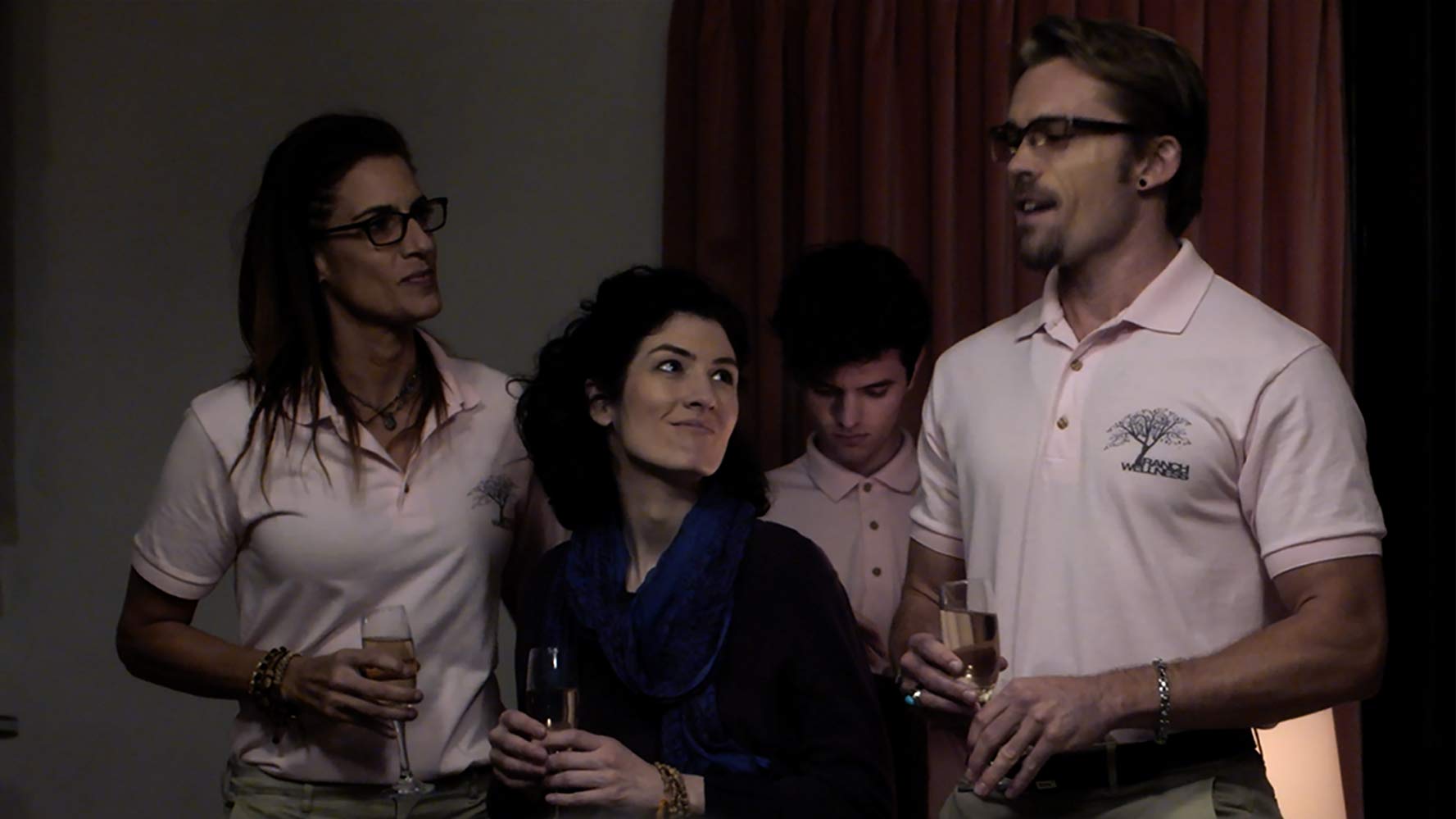
Kellerman:
Yeah, that's true too. On that note can you talk a little bit about the visual effects? There's some really fun ... I noticed some really fun practical effects, but then, I think there was some digital stuff in there too. Can you talk a little bit about working in the genre and how you chose ... I guess, since you wrote it, so you can control what all effects you're going to have in there. Just talk about that aspect a little bit because it's super fun.
Clark:
Yeah. Well obviously, the more money you have, the more freedom you have, and the more you can push it. For season one I went a little farther. But, at the same time, a lot of those scenes were more about the emotional impact or the moment rather than traditional horror film where sometimes you get long drawn out flasher moments or more gore.
Kellerman:
Yeah.
Clark:
But it is fun to work in the genre, and it's fun because I've been trying to figure out the practical, and it's always the place to start. My digital effects guy is like, "Figure out how to do as much as you can in the camera, and then we'll know what I need to do, and then we'll be able to set things up." So, that I can do it. But, season one actually had ... We had two blood gag knives, both of which didn't work. So, it was just ... Actually, we had one that was supposed to when you cut, it was supposed to leak blood, but you control it by the handle. So, you start to cut, and then you control it. Well, this thing just started dripping before you even got the knife to the skin. And then, the knife that was supposed to stab, it's supposed to go in. You click in here. You do all this then, and then it goes into the hilt. And this particular knife, it got stuck very quickly because the blood got sticky. And at one point, poor Candis was like, "Ouch." And we're like, " Candis, are you okay?" She's like, "Well, the knife didn't exactly go in."
Kellerman:
Oh no!
Clark:
So, little things like that. Like a comic aspect of trying to do low-budget horror with gag things. And with season two, some of it, we really had to hold back because I ran out of time because the fires came through.
Kellerman:
Oh my gosh. That affected your shoot?!
Clark:
It totally affected my shoot. So, the second to the last night, the electricity went out. Then, we had to shut down early. So, I lost all those scenes, and I had to pick them up the next day.
Clark:
Then, that night, when the fires were really roaring up the 101, I wanted to finish so badly, and I had this very layered horror scene I was going to do where we were going to stop, add prosthetics, go back, shoot something, add prosthetics, go back, shoot something. So, each time you cut to the girl, you would see more damage. And then, the owners of the house put their bags next to the door in preparation to flee.
Kellerman:
Oh my gosh.
Clark:
One of my crew was like, "Um, Jane. The owners just put their bags out", like oh God. All right. I almost lost the whole night the last night as well. So, when I went back to do a pickup day, that particular scene had to be taken down to the bare minimum because I simply didn't have enough time to get all of the stuff I needed and do that right. The end of season two, episode eight is really our big blood gag if you want to call it that. And even that was like... we had one take. If it didn't work, there was no way we had time to set it all up, start all over again. And that was one of the things that my visual effects guy said. He was like, again, "You really need to get this as much as possible in camera." We had a pump out back with a bucket of blood and then a tube that would run from the pump into the scene. And we had to start the scene without the pump on it, without the tube on the person so that we could get the top of the scene with that person looking normal. And then, we had to hold. Everybody came rushing in, make up person, put the tube on. And then, we all stepped out, and then the actor [portraying the killer] stepped back in. And then, we counted down, and it was... if he wasn't in position at the right time or she wasn't ready ... we would have been totally screwed. And we counted it down to ten. From 10 down to five, and then a silent countdown after that. A ten-second count of how long it was going to take to get the blood from the bucket to actually coming.
Kellerman:
So stressful!
Clark:
It was crazy. I was still worried about it, but when we were watching it, I swear to God, everybody was excited because it was such a big gag, and everybody was standing around the monitor.
Kellerman:
It looked great in the final scene.
Clark:
Yeah. As the blood started coming out, and his fingers went in, it was really funny because he was nervous. The guy was nervous to hurt the actress. And I was like, "You've got to bend your knuckles more. You've got to bend your knuckles more."
Kellerman:
Yeah, got to look like you're getting in there.
Clark:
And then, it seeped out that it was so perfect. We all got chills. I swear to God, I had goosebumps up my arm. It was so amazing. And then, my visual effects guys just had to come in on the close up the part. And then he added a really, really cool effect at the very end when the phone's lifted, and the blood spurts.
Kellerman:
Oh my gosh. Wow. What a great story. Well, I guess it was worth it because it looked really good.
Clark:
Oh, I know. It was worth it. I totally loved it. Just flying by the seat of your pants. And that's fine, but at the same time, the adrenaline rush is so high because there's so much at risk. It's fun, and you could tell, like everybody on this shoot was really excited by that moment. And if you had to do it, if you had like five or six opportunities to do it, that tension and that excitement would be the same. That's okay. I just had a crew of people that was very very small. We only had like ... I think the camera crew was maybe seven people all told, and that was a two camera shoot.
Kellerman:
Wow.
Clark:
So, everybody sort of felt like they were seeing it with me.
Kellerman:
Sure, of course. They were.
Clark:
Yeah, they were.
Kellerman:
Well, speaking of including everyone, can you talk about the really cool videos at the end of every episode? Did you direct the videos?
Clark:
I didn't direct them. Honestly, that was my ... Since I started my career, I have gotten music for free. I have found unknown artists, they've been kind enough to share their work. Having your song in a film or in the TV show while the actual action is going is satisfying and hopefully people looked at the credits to see who the artists are. I felt like this was one way that I could actually give more exposure to the artists that I really like that have always supported me. So, I came up with this idea to do the videos at the end, and then I went back to all my regular people who've contributed over the years and said, "Hey, if you've got a music video, send me everything you have. I'll try to find a place for it." And the interesting thing was that I actually had to go out and find more people because so many of my artists can't afford to go out and make their own music videos. They only had the music. They didn't have the video. So, I discovered a bunch of new people in the process too, which is cool.
Kellerman:
Yeah, exactly. And it just, I don't know, it just rounded out the fun ensemble feel of the whole project. So, I really enjoyed that. But, I guess we'll wrap it up now. Can you just give a quick heads up about when to expect season three and four and where you are in the process with those?
Clark:
Season four is written. Season three is in process of being written. And I'm hoping to shoot ... It will probably not be until the spring or summer, but I'm planning to shoot season three and four back to back because I want to use tech from three on four and vice versa.
Kellerman:
Gotcha.
Clark:
So, yeah. I'm planning to shoot those back to back, and hopefully have them out next fall because one of them... season four, is Christmas themed. People die from Christmas ornaments.
Kellerman:
Oh, i love it. I love Christmas horror. It's a favorite sub genre.
Clark:
That's so funny. Yeah, I had to figure out how would they die from Christmas ornaments! What are my choices. It was fun. That was really a fun one to come up with things for with them. So, my goal is to close out with Christmas, therefore season three would have to be out in the fall.
Kellerman:
Gotcha. Gotcha. Oh, how fun. Well, I'm really looking forward to that for sure then. We'll definitely be on the lookout. Thank you so much for chatting with me today. I really appreciate it, and I'm really looking forward to the next seasons and to see what else you have coming up in the future. So, thank you so much.
Clark:
Yeah, thank you. I really appreciate it.
